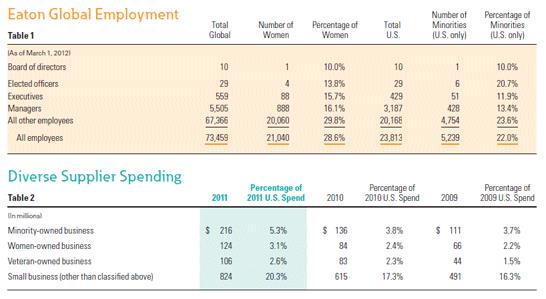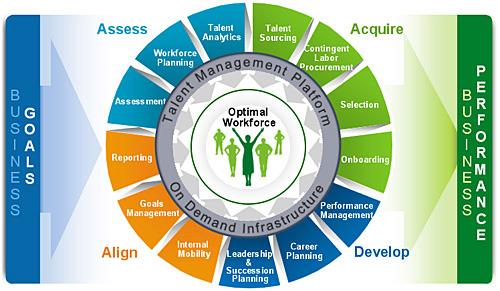
In today’s marketplace, companies are more globalized; diversity is exponentially increased, not only of our employees, but also of our customers. Increased diversity creates challenges in recognizing opportunities for leveraging the strengths of a diverse workforce, and then creating environment of inclusivity by which organizations, employees and customers can flourish.
To drive a positive impact on organizational results, increase employee retention and develop future leaders, organizations must become truly inclusive and engaging. Diversity of thought can create innovative solutions to problems, create new products or services, and more holistically represent the diverse customer bases that you serve.
So, here are four areas of discussion:
To drive a positive impact on organizational results, increase employee retention and develop future leaders, organizations must become truly inclusive and engaging. Diversity of thought can create innovative solutions to problems, create new products or services, and more holistically represent the diverse customer bases that you serve.
So, here are four areas of discussion:
- Defining diversity in order to become truly inclusive
- How to create an inclusive work environment
- Getting employees to opt-in and become valued contributors
- Success metrics impacting organizational results
1-Defining diversity in order to become truly inclusive
Workplace diversity can be broadly defined as the attempt to respect and incorporate the unique backgrounds, talents, perspectives, identities and ideas each employee brings to a company.
The definition becomes more complicated, however, as diverse groups expand to include race, ethnicity, nationality, age, religion, sexual orientation and gender. A completely diverse workplace understands the scale of possibilities within each diverse group, and the best way to work around all strengths and weaknesses each group brings to the table.
A few points to consider:
Misconceptions: It must be a template from which to create fair treatment for the existing diverse groups of people and those in the future.
Variation: You may have individuals from an older generation working with much younger people, where the age difference results in miscommunication. You may have atheists working with people with very strong religious or spiritual backgrounds. Women have historically faced inequality in treatment and pay when compared to men in the workplace, but you must also account for transgendered or gender queer (those with identities other than male or female) individuals who do not fit on either side of the gender binary. Whether or not you have had prior access to the diverse groups of people who apply to your company or work alongside of you, you will have to be prepared to handle these differences in a way that will benefit everyone involved.
Benefits: The benefits of organizing workplace diversity include an increase in productivity, work alliances that both challenge and satisfy those involved, effective and open communication and conflict resolution, and an overall more inclusive work environment. You are likely to reduce high turnover rates and dispel myths that eliminate the possibility for collaborative work between diverse groups.
Structure: Workplace diversity can occur top down, with a chief executive or high-level manager organizing information sessions for the company's employees, or it can be a grassroots effort, where a group of people with diverse backgrounds and lifestyles come together to create a "diversity council" that will work to educate the company as a whole.
Communication: A successful diversity council will have to recruit people who are very different from each other, but open to working together. The people will have to meet regularly to discuss goals, the messages to send to the company and how it will be done. Perhaps each month can be designated to a specific diverse group, honored with an interesting presentation, such as a short film that documents the history of that group.
All-inclusive: The definition of workplace diversity is simple--the act of organizing respect and understanding for all people, regardless of race, ethnicity, gender, sexual orientation, religion, age or background in the workplace. However, when applying this definition to your own efforts to create workplace diversity, you must remember that the term is fluid. It is most effective when applied to each situation with fresh eyes and an open mind.
2-How to create an Inclusive work environment
Here are seven actions for leading or creating an inclusive organization:
Achieving diversity and inclusivity means creating the structures, policies and practices in organizational life that recognizes more than one view and signals the importance of learning from differences. Inclusion refers to the systemic nature of an organization. Inclusion is not necessarily limited to the way an organization deals with employees; it may refer to interactions with customers and clients, partners, vendors, suppliers, and subcontractors as well.
We began by recognizing that organizations could be diverse without being inclusive. By broadening recruitment and improving retention organizations could achieve greater diversity, expanding the differences and similarities represented by those who comprise it. The way interactions are structured, however, could exclude acknowledgement of any, but predominate group's perspectives and concerns and be, thus, non-inclusive.
In discussions of diversity, the focus is often personal and interpersonal. Applying our interpretation of inclusion, the focus becomes organizational and holistic. We worked from the premise that organizations that achieve inclusion would invite the synthesis of ideas, knowledge and perspectives. In doing so, inclusive organizations would encourage collaboration, support problem solving and promote creativity, flexibility and responsiveness to change. As we used these terms, an organization could have inclusive internal policies and practices without being diverse. However, the potential of its inclusion to enhance organizational effectiveness would be limited by the extent of the organization's diversity. Without diversity, vision is narrowed. Pursuing high standards for workplace fairness and organizational effectiveness requires both diversity and inclusion.
In response to intensifying global competition, more and more organizations are striving to create inclusive work environments that can offer dramatic improvements in productivity, quality, creativity, customer service, job satisfaction and talent retention. Those experiencing the greatest success tend to be those that make creating and sustaining an organizational culture of inclusion a leadership priority, and establish tangible ways of holding leaders throughout the organization accountable for making quantifiable progress.
Changing an organization's culture requires a carefully planned, sustainable effort that must be led by the organization's senior executives and supported by leadership at all levels of the organization. It must start with an understanding of people's current behaviors and experiences that are preventing the organization from achieving its goals, and a vision of the new organizational reality that will be needed to create the greater sense of belonging, increased commitment, and unleashed synergies of an inclusive work environment.
Any change effort that is not supported and modeled by the organization's senior executives will quickly be recognized as nothing more than a "flavor of the month" by the people of the organization. But the effort must also be supported by mid-level managers, work-group leaders and front-line supervisors throughout the organization or it will evolve into an "us against them" scenario in which people are not held accountable for failing to buy into the senior leaders' direction for the organization.
3-Getting employees to opt-in and become valued contributors
The best way is to achieve this objective is to have the following attributes that are part of inclusive organizations:
4-Success metrics – impacting organizational results
Effective diversity measures and evaluation processes that determine the ROI of diversity management can provide an organization with invaluable information to support key business imperatives--such as the impact of diversity training and areas of improvement needed for recruitment strategies. Measuring workplace diversity can be accomplished using a number of methods---simply walking through your office or plant and noticing the many differences between employees, or generating an employee census report sorted by age, race, ethnicity, sex and disability. In some cases, the best way to measure diversity is using a qualitative-centered method, rather than just a head count. The importance of qualitative diversity measurements builds inclusive organization and is not just about the diversity scorecard data we track to measure progress internally and externally with suppliers as well.
Workplace diversity can be broadly defined as the attempt to respect and incorporate the unique backgrounds, talents, perspectives, identities and ideas each employee brings to a company.
The definition becomes more complicated, however, as diverse groups expand to include race, ethnicity, nationality, age, religion, sexual orientation and gender. A completely diverse workplace understands the scale of possibilities within each diverse group, and the best way to work around all strengths and weaknesses each group brings to the table.
A few points to consider:
- Misconceptions
- Variations
- Benefits
- Structure
- Communications
- All-inclusive
Misconceptions: It must be a template from which to create fair treatment for the existing diverse groups of people and those in the future.
Variation: You may have individuals from an older generation working with much younger people, where the age difference results in miscommunication. You may have atheists working with people with very strong religious or spiritual backgrounds. Women have historically faced inequality in treatment and pay when compared to men in the workplace, but you must also account for transgendered or gender queer (those with identities other than male or female) individuals who do not fit on either side of the gender binary. Whether or not you have had prior access to the diverse groups of people who apply to your company or work alongside of you, you will have to be prepared to handle these differences in a way that will benefit everyone involved.
Benefits: The benefits of organizing workplace diversity include an increase in productivity, work alliances that both challenge and satisfy those involved, effective and open communication and conflict resolution, and an overall more inclusive work environment. You are likely to reduce high turnover rates and dispel myths that eliminate the possibility for collaborative work between diverse groups.
Structure: Workplace diversity can occur top down, with a chief executive or high-level manager organizing information sessions for the company's employees, or it can be a grassroots effort, where a group of people with diverse backgrounds and lifestyles come together to create a "diversity council" that will work to educate the company as a whole.
Communication: A successful diversity council will have to recruit people who are very different from each other, but open to working together. The people will have to meet regularly to discuss goals, the messages to send to the company and how it will be done. Perhaps each month can be designated to a specific diverse group, honored with an interesting presentation, such as a short film that documents the history of that group.
All-inclusive: The definition of workplace diversity is simple--the act of organizing respect and understanding for all people, regardless of race, ethnicity, gender, sexual orientation, religion, age or background in the workplace. However, when applying this definition to your own efforts to create workplace diversity, you must remember that the term is fluid. It is most effective when applied to each situation with fresh eyes and an open mind.
2-How to create an Inclusive work environment
Here are seven actions for leading or creating an inclusive organization:
- Be a learner. Be willing to challenge yourself and grow.
- Be inquisitive. Seek a range of perspectives.
- Set the vision. Explain the reasons why inclusion is important.
- Model inclusive behaviors. Demonstrate that "none of us is as smart as all of us."
- Champion the change effort. Be an active advocate for change.
- Speak out when necessary. Hold the organization accountable; it is also on a learning curve, and it needs constructive feedback.
- Hold each other accountable for all of the above. Hold your direct-reports accountable. Be a learning-partner for them as well as all leaders.
Achieving diversity and inclusivity means creating the structures, policies and practices in organizational life that recognizes more than one view and signals the importance of learning from differences. Inclusion refers to the systemic nature of an organization. Inclusion is not necessarily limited to the way an organization deals with employees; it may refer to interactions with customers and clients, partners, vendors, suppliers, and subcontractors as well.
We began by recognizing that organizations could be diverse without being inclusive. By broadening recruitment and improving retention organizations could achieve greater diversity, expanding the differences and similarities represented by those who comprise it. The way interactions are structured, however, could exclude acknowledgement of any, but predominate group's perspectives and concerns and be, thus, non-inclusive.
In discussions of diversity, the focus is often personal and interpersonal. Applying our interpretation of inclusion, the focus becomes organizational and holistic. We worked from the premise that organizations that achieve inclusion would invite the synthesis of ideas, knowledge and perspectives. In doing so, inclusive organizations would encourage collaboration, support problem solving and promote creativity, flexibility and responsiveness to change. As we used these terms, an organization could have inclusive internal policies and practices without being diverse. However, the potential of its inclusion to enhance organizational effectiveness would be limited by the extent of the organization's diversity. Without diversity, vision is narrowed. Pursuing high standards for workplace fairness and organizational effectiveness requires both diversity and inclusion.
In response to intensifying global competition, more and more organizations are striving to create inclusive work environments that can offer dramatic improvements in productivity, quality, creativity, customer service, job satisfaction and talent retention. Those experiencing the greatest success tend to be those that make creating and sustaining an organizational culture of inclusion a leadership priority, and establish tangible ways of holding leaders throughout the organization accountable for making quantifiable progress.
Changing an organization's culture requires a carefully planned, sustainable effort that must be led by the organization's senior executives and supported by leadership at all levels of the organization. It must start with an understanding of people's current behaviors and experiences that are preventing the organization from achieving its goals, and a vision of the new organizational reality that will be needed to create the greater sense of belonging, increased commitment, and unleashed synergies of an inclusive work environment.
Any change effort that is not supported and modeled by the organization's senior executives will quickly be recognized as nothing more than a "flavor of the month" by the people of the organization. But the effort must also be supported by mid-level managers, work-group leaders and front-line supervisors throughout the organization or it will evolve into an "us against them" scenario in which people are not held accountable for failing to buy into the senior leaders' direction for the organization.
3-Getting employees to opt-in and become valued contributors
The best way is to achieve this objective is to have the following attributes that are part of inclusive organizations:
- Demonstrated Commitment to Diversity
- Holistic View of the Employees and the Organization
- Access to Opportunity
- Accommodation for Diverse Physical & Developmental Abilities
- Equitable Systems for Recognition, Acknowledgement & Reward
- Shared Accountability and Responsibility
- 360° Communication and Information Sharing
- Demonstrated Commitment to Continuous Learning
- Participatory Work Organization and Work Process
- Recognition of Organizational Culture and Process
- Collaborative Conflict Resolution Processes
- Demonstrated Commitment to Community Relationships
4-Success metrics – impacting organizational results
Effective diversity measures and evaluation processes that determine the ROI of diversity management can provide an organization with invaluable information to support key business imperatives--such as the impact of diversity training and areas of improvement needed for recruitment strategies. Measuring workplace diversity can be accomplished using a number of methods---simply walking through your office or plant and noticing the many differences between employees, or generating an employee census report sorted by age, race, ethnicity, sex and disability. In some cases, the best way to measure diversity is using a qualitative-centered method, rather than just a head count. The importance of qualitative diversity measurements builds inclusive organization and is not just about the diversity scorecard data we track to measure progress internally and externally with suppliers as well.
It is as much about our attitude and behaviors as leaders and having a sense of empathy for the different experiences of individuals.I would consider more of a process to take business goals that will more human capital through a process of Access, Acquire, Alignment and Development to enhance the overall business performance that impacts the bottom-line…sustained profitable growth.
To achieve a clear path to maximizing results through diversity and inclusion a Blue Print for measuring diversity & inclusion at the workplace should be considered.
Here’s an example of what a company’s D&I Blue Print plan may contain:
Next: I’ll explore how diversity impacts the bottom-line…profitable growth.
Here’s an example of what a company’s D&I Blue Print plan may contain:
- Introduction
- The Case for Diversity and Inclusion
- Vision and Values
- A Foundation of Inclusion and Respect
- Objectives and Priorities
- Talent & Workplace
- Marketplace
- Community - Priority Action Plans
- Women
- Minorities
- Active Leaders
- Enabling Business Clients
- Supplier Diversity
- Education & Youth
- Inspiring Progress
- Geographic and Business Unit Priorities - Sustaining the Diversity Blueprint
- Fundamentals for Sustainability
- Stakeholder Engagement
- Oversight and Responsibility
- Responsibility
- Policies and Practices
- Reporting and Transparency
- Measures of Success
Next: I’ll explore how diversity impacts the bottom-line…profitable growth.


 RSS Feed
RSS Feed